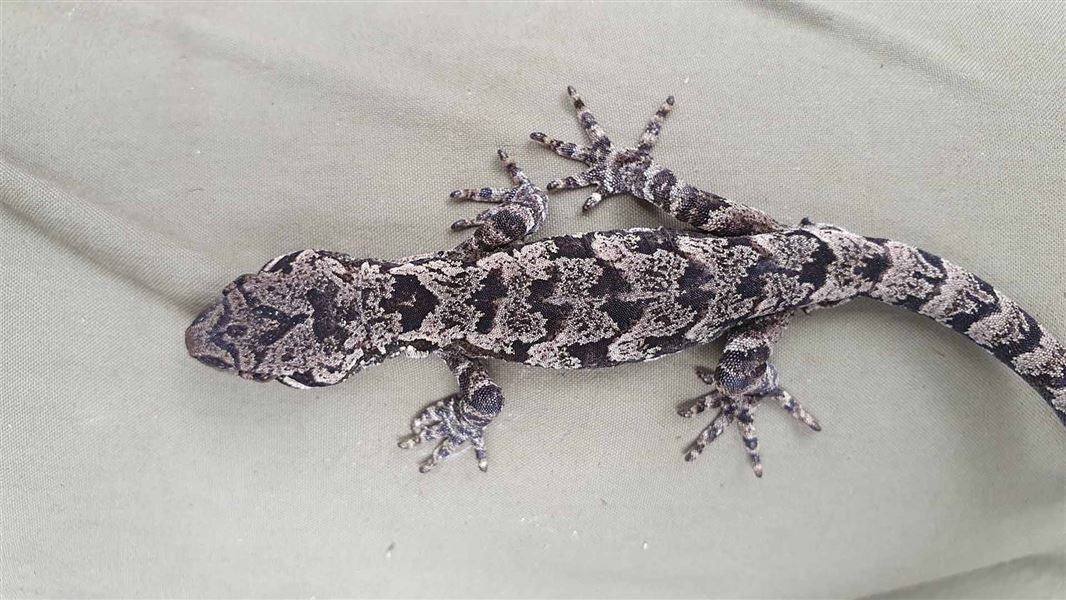
Introduction
Until very recently the broad-cheeked gecko was very rarely seen.Population: Unknown as of 2021 but probably sparsely scattered through suitable forest from Saltwater to Ōkārito forest on the South Islands West Coast.
New Zealand status: Endemic
Conservation status: Threatened–Nationally Endangered
Image gallery
The broad-cheeked gecko is also sometimes known as Ōkārito gecko. It's scientific name is Mokopirirakau “Ōkārito”.
About this gecko
We know very little about this species so our information relies on what we know from related geckos. Broad-cheeked geckos are most closely related to other forest gecko species in the Mokopirirakau genus. We infer from those related species that broad-cheeked gecko probably spends much of their time in the forest canopy where they can bask in the sun.
The broad-cheeked gecko probably shelters in the diverse epiphyte gardens in the canopy. Epiphyte gardens are the plants that live perched high in the branches of trees. They can support a diverse ecosystem. Geckos find food and shelter in these epiphyte gardens and may prefer them to the forest floor because they’re sunnier and provide tight hiding places where they can shelter from weather and predators.
We don’t know the life history of this species, but its relatives often only have 1 or 2 babies per year and can live for many decades. Its name “broad-cheeked” refers to its broad face and its “chubby cheeks”.
Until recently the broad-cheeked gecko was only known from:
- a handful of verified sightings from the wider Ōkārito area, and
- one alpine record from the Douglas Range.
Our work
The broad-cheeked gecko was rediscovered in the Ōkārito Sanctuary near Franz Josef in 2020. Because of this DOC partnered with Te Rūnanga o Makaawhio and businesses affected by COVID-19 to deploy a network of detection devices in South Westland. The search began to find the elusive broad-cheeked gecko.
There are now around 400 plus detection devices in South Westland. Checks of the detection devices have yielded a large number of new gecko records – this has improved knowledge of distribution and life-history traits.
Recent surveys have located a new population of broad-cheeked gecko in Saltwater Forest, extending our knowledge of the species distribution by 20 km.
You can help
Report all lizards sightings to the local DOC office. Any records of lizards are important and help build our understanding of lizard distribution. Significant discoveries are often made by following up observations from locals.
If you're in the South Westland any records of lizards are important and help build our understanding of where lizards are.